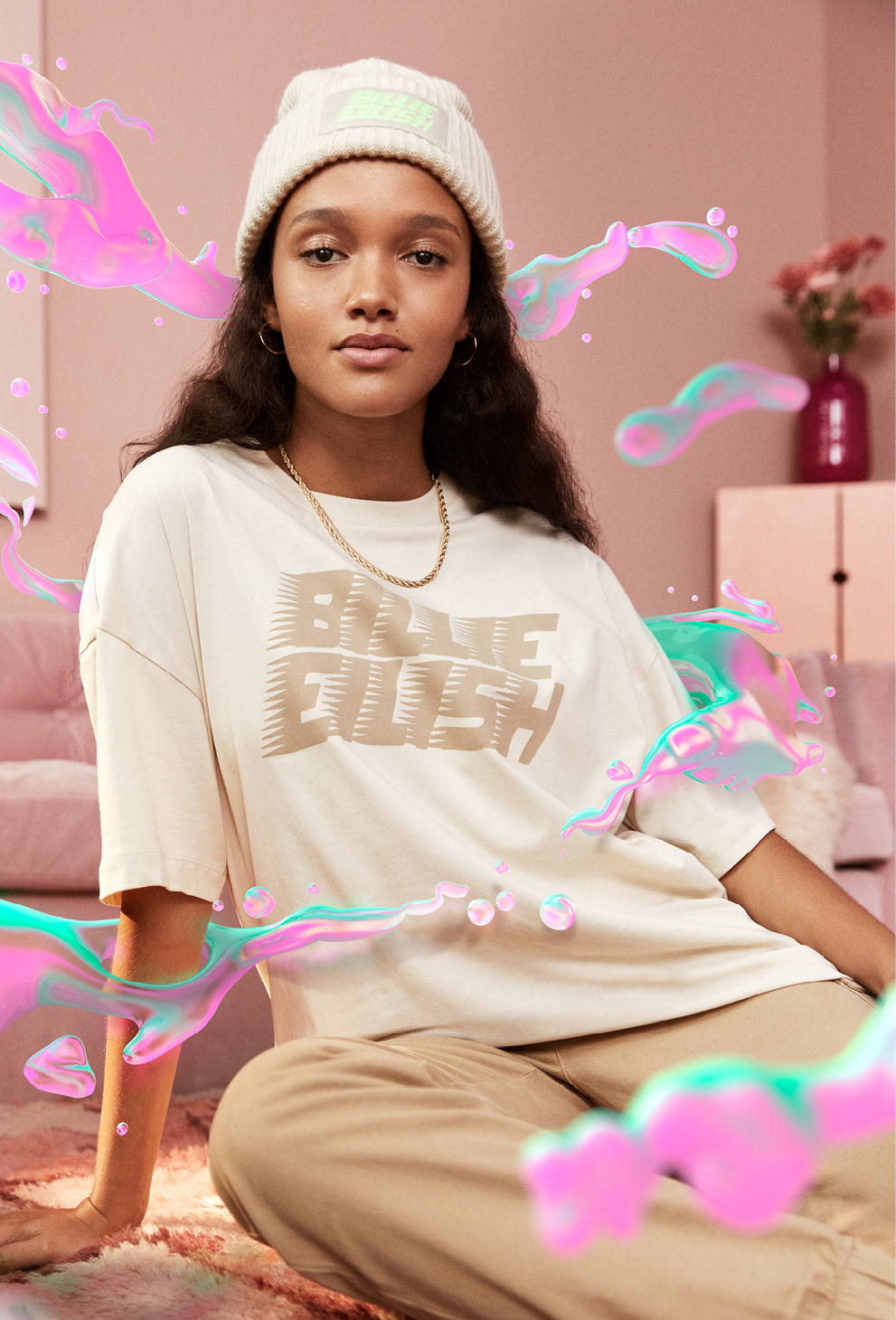As environmental sustainability becomes more of a consumer concern, brands are taking major steps to build sustainable practices into their organizations – from recycling to packaging, Catharine P. Taylor writes.
On its surface, the partnership makes sense for a very common reason; it’s certainly far from the first time a major brand has co-opted the top act on Billboard’s Artist 100, in pursuit of the youth market.Clothing retailer H&M turned the page on 2019 with a flourish, opening 2020 with news that it had partnered with pop star Billie Eilish on a merch drop featuring not only the singer’s official logos, but also her oversized aesthetic, from long, boxy t-shirts to sweatshirt dresses.
But there’s more to this pact than meets the eye – Eilish is one of the more vocal members of her generation about addressing climate change. (Check out her video for “all the good girls go to hell” to get the full picture.) For H&M, working mightily to build its sustainability cred, the Eilish deal is a perfect, well, fit, as the merchandise, “has been made from materials sourced in a more sustainable way” according to a company press release.

In the chapter from WARC’s Marketer’s Toolkit 2020 on how trends in Society are affecting marketers, we referred to the focus on sustainability as “The Greta Effect” in honor of the generation’s most famous climate change activist, Greta Thunberg. It’s because what we are seeing from H&M and other marketers shows how broad – and deep – the mission to be sustainable is. It’s an issue that hits fashion – and perhaps in particular fast-fashion – Impactfully, since the need to own the latest clothing trend can be so at odds with environmental stewardship. However, even as H&M and its competitors look to rush the latest fashions onto store shelves, they are also embracing the circular economy, in which recycled products, even in the fashion industry, are transformed into new products.
Our Toolkit research shows that, increasingly, marketers across categories are getting it. But here’s where the real sea change is: even as, in the case of the Eilish/H&M partnership, sustainability initiatives garner positive headlines, that doesn’t appear to be the point. Some 84% of the 800 marketers and agencies who responded to Toolkit’s global survey said that conscious consumption and sustainability were factoring into their 2020 planning, but when you dig down into the details, you see how deep those commitments go; when asked about how they are responding to sustainability issues, marketers are largely taking a “big picture” approach. Some 57% are looking to change corporate culture and processes; 46% are looking to change packaging, 41% are looking to make changes to product and the supply chain and 26% are looking to change distribution and delivery.
It’s hardly that marketers are ignoring their bread and butter – 47% said changes in media and communications were one way they were responding to the sustainability challenge. But the clear signal, particularly as consumers demand more environmental responsibility from the companies they do business with, is that feel-good messaging is no more than window dressing.
The consulting firm Accenture found that 62% of consumers are attracted to companies that believe in reducing plastics and improving the environment, and a Nielsen study showed this is age-agnostic – the youthful skew of the H&M/Eilish partnership notwithstanding; 85% of millennials and 65% of those age 65+ feel it’s important for companies to “implement programs that improve the environment.” Jane Fonda, now age 82, who spent much of the fall of 2019 facing weekly arrests for her climate change protests, is clearly not alone among her peers.
Maybe the most obvious way that consumers see marketers committing to environmental stewardship is through packaging. Companies including Clorox, Coca-Cola, Danone, Mars, Mondelēz, Nestlé, PepsiCo, and Procter & Gamble committed to the Loop initiative, which launched at Davos a year ago. Loop’s goal is to replace single-use containers with durable, refillable containers.
But Loop – for all its big-name buzz – is just one example of how packaging is changing. Even as brands want to take initiative, retailers may force them into it. UK supermarket chain Tesco is planning to remove one billion pieces of plastic from the products it sells in-store by the end of next year as part of its 4Rs strategy (remove, reduce, reuse or recycle) to axe all non-recyclable and excess packaging from its businesses.
Other marketers are making big packaging changes as well. Carlsberg beer invented ‘snap packs’, which use a recyclable glue to connect cans of beer instead of using the standard plastic rings, reducing the amount of packaging per unit by 76%. It is currently working on a paper bottle. All of these moves make environmental, and marketing, sense – according to IRI research, three-quarters of shoppers across Europe say they prefer to buy products with environmentally-friendly packaging.
What’s taking shape is a world where marketers take the lead on protecting the planet, rather than being regulated into it. But the real driver is consumers, who are pushing for a world where capitalism can become sustainable, instead of being a never-ending drag on the planet’s resources.
Read more in WARC’s deep-dive report: Marketer’s Toolkit 2020: The Greta Effect.


